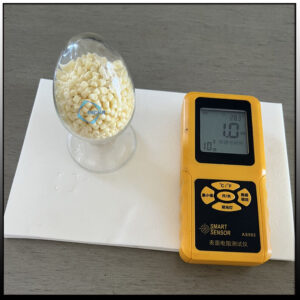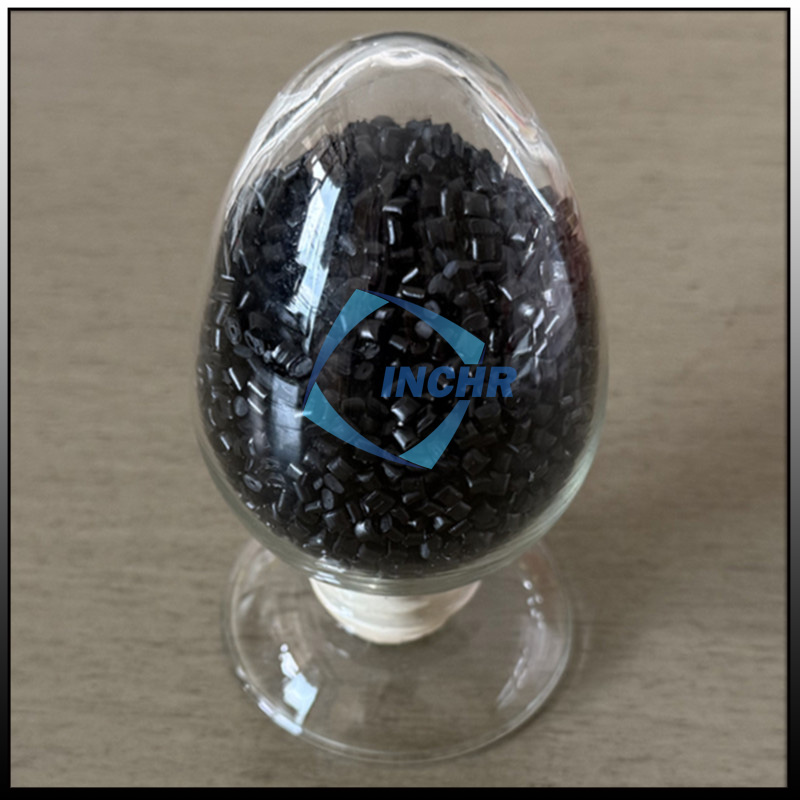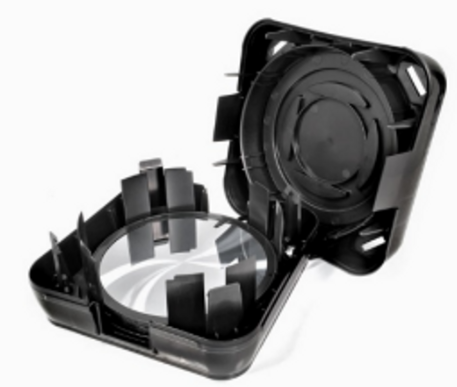EVA resin is an ethylene-vinyl acetate copolymer, a water-insoluble polymer formed by copolymerizing ethylene and vinyl acetate under the initiation of peroxide. The content of vinyl acetate determines the performance of EVA materials. Generally, the higher the VA content, the better the flexibility, resilience, adhesion, and transparency of EVA, but the hardness and melting point will be relatively lower.
Natural antistatic EVA compound is modified ESD plastic, the core of this antistatic compound is a permanent antistatic agent, so the natural antistatic EVA compound has permanent antistatic performance. It contains a small amount of foaming agent and other additives to form a foaming-grade antistatic compound with antistatic properties. The surface resistance of this compound is 10^7~10^9 ohms/sq.
In terms of durability, in a normal environment (such as temperature 25℃, humidity 50%) and expected service life, the anti-static performance of antistatic EVA compound decay does not exceed 20% of the initial performance. And after multiple washing, friction, chemical contact, etc., it can still maintain effective anti-static function. In terms of safety, the antistatic EVA compound is required to be non-toxic comply with relevant environmental protection and safety regulations, such as the EU REACH standard, and will not release harmful, flammable, or allergenic substances during use.

Factors affecting the performance of natural antistatic EVA compound
The comprehensive application and continuous innovation of the following core technologies are the keys to producing high-performance antistatic EVA compounds.
- Formula design: It is crucial to develop a formula that can effectively achieve antistatic performance while maintaining the good physical properties of antistatic EVA compounds. This requires in-depth research and optimization of the types, dosages, and interactions of various additives (such as antistatic agents, foaming agents, stabilizers, etc.).
- Antistatic agent selection and application: Select a suitable permanent antistatic agent and master its addition amount and addition method to achieve the ideal antistatic effect without affecting the basic properties of antistatic EVA compounds.
- Blending and compounding technology: Blend or compound EVA with other polymer materials with specific properties to improve the comprehensive performance of the material.
- Processing technology control: Precise control of parameters such as temperature, pressure, speed, etc. during processing such as extrusion and injection molding to ensure that the structure and performance of the material meet the requirements.
- Quality inspection and monitoring: Establish a complete quality inspection system to accurately inspect and monitor anti-static performance, mechanical properties, thermal properties, etc., and promptly discover and solve quality problems in the production process.
Testing standard of antistatic performance
There are three common testing standards for the anti-static performance test of antistatic EVA:
- International Electrotechnical Commission (IEC): such as the IEC 61340 series of standards, which cover all aspects of static control, including the test methods for the static performance of materials.
- American National Standards Institute (ANSI): Such as ANSI/ESD S20.20, etc., are used to standardize the requirements for electrostatic discharge protection work areas.
- Chinese National Standards (GB): Such as GB/T 1410-2006 “Test Methods for Volume Resistivity and Surface Resistivity of Insulating Materials”.
Testing conditions of antistatic performance
When testing the antistatic performance of antistatic EVA foam materials, these conditions will affect the test results:
- Environmental conditions: The recommended temperature is generally 23℃±5℃, and the relative humidity is 40% – 60%. Because temperature and humidity will have a significant impact on the test results of antistatic EVA foam materials. For example, if the humidity is too high, the surface of the material may absorb more moisture, which increases the surface conductivity and reduces the surface resistance. Too high or too low a temperature will also interfere with the state of the internal molecules of the compound, thereby affecting the accuracy of the test. At the same time, the test environment should be kept as far away from large motors, transformers, and other equipment as possible to avoid the electromagnetic fields generated by them interfering with the test results.
- Test electrode: Select a suitable test electrode and ensure good contact with the sample surface to obtain accurate resistance measurements.
- Measurement area and number: Perform multiple measurements at different areas or spots of the sample to obtain more representative data and calculate the average value.
- Cleanliness: Make sure the surface of the anti-static EVA foam sample is clean to avoid dust, oil, or other contaminants that may affect the test results.




